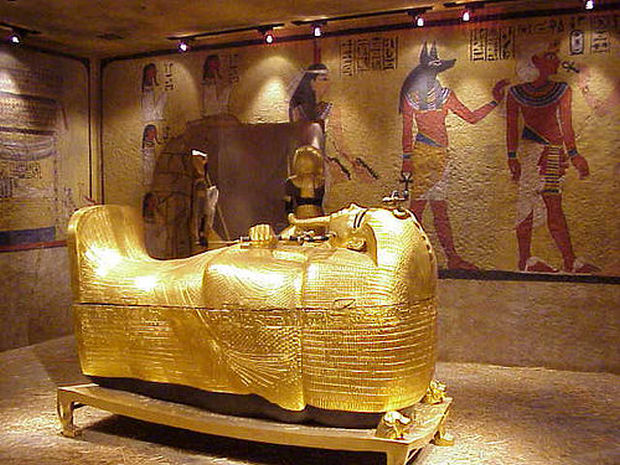


Originalveroffentlichung in: Studien zurAltagyptischenKultur36, Ahmed, Head of the English Department, Sohag University, for his advice regarding English language. Mohamed Mustafa Al-Shafey for their invaluable support. Nadia Naguib, Director of the magazine of Shutb and the accompanying inspector Mr. Ahmed el-Khatib, Director General of Asyut Mrs. Samir Anis Salib, Director General of Antiquities for Middle Egypt Mr. Magdy el-Ghandour, Head of the Foreign and Egyptian Missions Affairs and Permanent Committee Mr. Sabri Abd el-Aziz, Head of the Archaeology Sector Mr. 2 We would like to thank the Supreme Council of Antiquities, especially Professor Dr. Das Forschungsmagazin der Johannes Gutenberg- Universitat Mainz, 2004,14-17 J. Verhoeven-van Elsbergen, in: Natur und Geist. Underneath this band is a yellow painted plaster (mini- 1 In regards to „The Asyut Project" cf. A kheker-frieze forms the upper limit of the contracts, a band of red colour (height: 8 cm) marks the lower end.

7 m) of the large inner hall, the contracts cover more than 40 m 2 and superimpose an earlier incised inscription, from which only traces remain. Written on the northeastern wall (height: c. 1) into which Djefai-hapi I entered with the priests of the temples of Wepwawet and Anubis, respectively, as well as with the workmen of the necropolis were copied. Tomb I Epigraphic work in Tomb I continued. This year's fieldwork focused on Tombs III, IV and N13.1 of the First Intermediate Period, Tomb I of the Twelfth Dynasty, and the mapping of the necropolis (fig. In addition to the three authors of this report, members of the mission were: Amar Abu Bakr, Fritz Barthel, Meike Becker, Ulrike Fauerbach, Eva Gervers, Andrea Kilian, Yasser Mahmoud, Mohamed Naguib Reda, Ilona Regulski, Hazim Salah Abdallah, Laura Sanhueza-Pino, Sameh Shafik, and Monika Zoller. From 30* September to 11* October, the mission studied objects in the magazine at Shutb 2. From 28* August to 28 th September 2006, the Egyptian-German joint mission of Sohag University and the Johannes Gutenberg-Universitat Mainz conducted its fourth season of fieldwork in the ancient necropolis of Asyut situated in the western mountains (Gebel Asyut al-gharbi) 1. A late corridor, which connects Tomb m and IV was cleaned pottery and wooden models were studied. Senwosret I) and the autobiographical inscriptions in Tomb m and IV (First Intermediate Period). Other work resulted in facsimiles of the ten contracts in Tomb I (temp.

Its painted decoration is well preserved In addition, graffiti of the New Kingdom (literary texts, visitors' graffiti, drawings) cover the tomb walls. The tomb belonged to Iti-ibi(-iqer), Asyuti nomarch at the very end of the First Intermediate Period. 81-103 The Asyut Project: Fourth Season of Fieldwork (2006) Jochem Kahl - Mahmoud El-Khadragy - Ursula Verhoeven with a contribution by Monika Zoller Abstract The fourth season of fieldwork at Gebel Asyut focused on the documentation of the recently discovered Tomb N13.1. Pharaohs often built huge tombs to be buried in, but given her status as a prisoner of Rome at the time of her death, it's likely Cleopatra was given a quiet burial in an austere tomb.Originalveroffentlichung in: Studien zurAltagyptischenKultur36, 2007, S. "When experts astonishingly uncover an undisturbed tomb decorated in gold leaf, it could be the answer to the 2,000-year-old mystery of Cleopatra’s final resting place."Ĭleopatra VII was born in 70 or 69 BC and ruled Egypt as co-regent for almost 30 years.įollowing her death, Egypt was annexed by its Roman rulers, effectively ending the 3,000-year-old Ancient Egyptian Empire. The Ancient Egytpian empire fell due to a mix of factors, including wars with other empires and a 100-year period of drought and starvation.The Egyptians believed in life after death, and important people's corpses were mummified to preserve their bodies for the afterlife.Pharaohs built huge elaborate tombs to be buried in, some of which were pyramids – at the time among the largest buildings in the world.Religion and the afterlife were a huge part of Ancient Egyptian culture.The Egyptians were ruled by kings and queens called pharaohs.They invented a solar calendar, and one of the world's earliest writing systems: The hieroglyph.The Ancient Egyptians were experts at farming and construction.It lasted for about 3,000 years and saw the building of complex cities centuries ahead of their time – as well as the famous Great Pyramids.The civilisation began about 5,000 years ago when ancient humans began building villages along the River Nile.The Ancient Egyptians were an advanced civilisation who at one point owned a huge portion of the globe.


 0 kommentar(er)
0 kommentar(er)
